Coastal Erosion Theories
Longshore Drift:
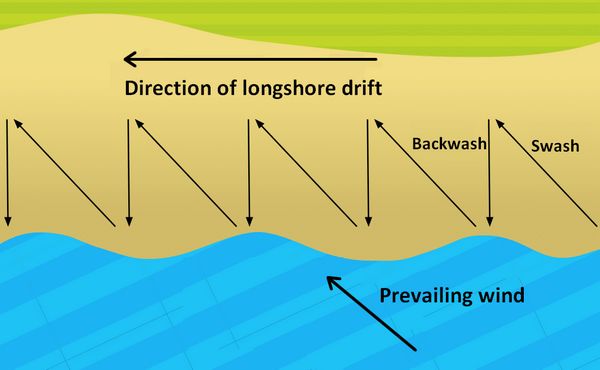
As a wave runs up the beach (swash) sediment is deposited.
Following the laws of gravity, the water and some sediment runs off the beach (backwash) by the shortest route.
This angled swash and perpendicular backwash moves sediment down the coastline.
Terminal Groyne Effect:
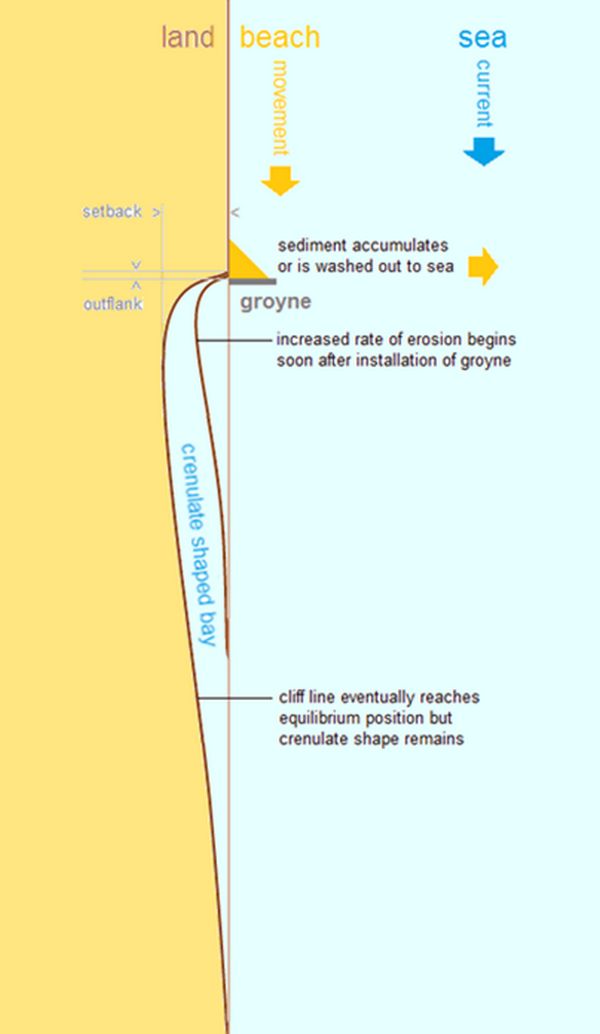
A diagram explaining Terminal Groyne Effect (courtesy of the Urban Rim website).
This effect not only occurs after a groyne but at the point where other defences come to an end (eg a promenade).
Outflanking:
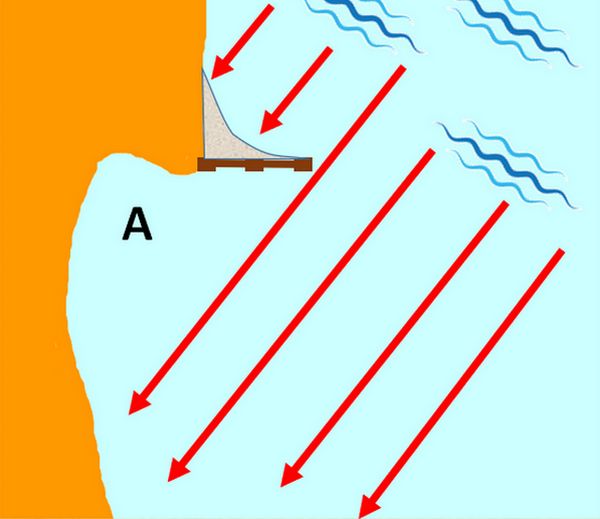
The waves immediately downcurrent of the groyne have an increasingly larger area over which to deposit their sediment.
The density of sediment in Area A will be less than other areas.
Less sediment, lower beaches, poorer defences, greater erosion.
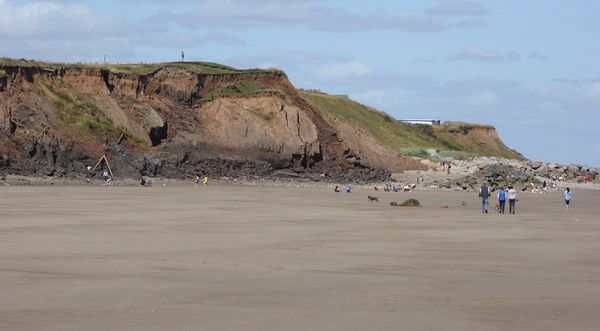
Outflanking the defences at Mappleton Beach with subsequent cliff slumping.
Slumping:
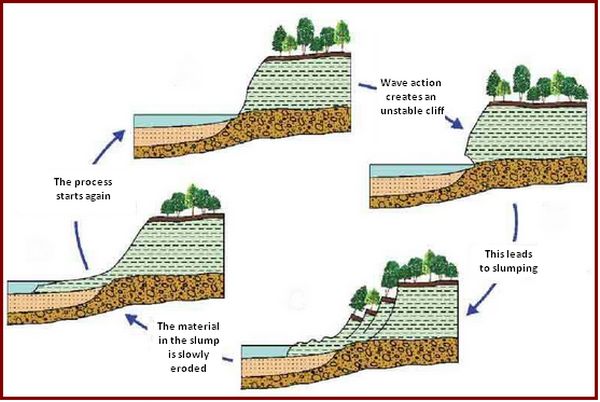
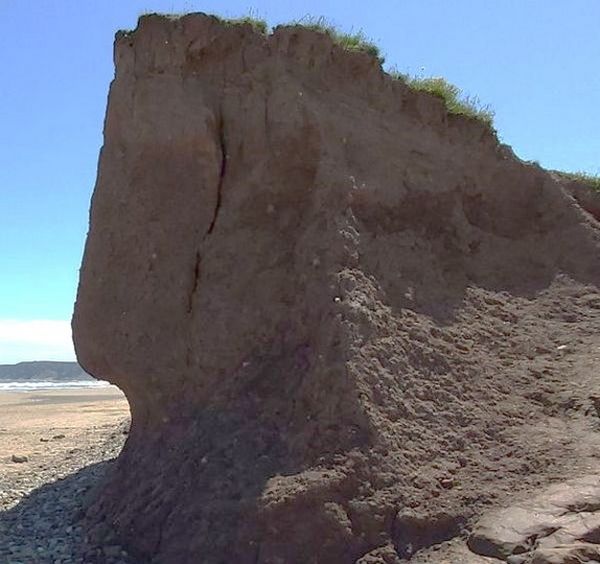
A small cliff demonstrates the under cutting of the base and a developing fracture.
This cliff, especially when soaked with rainwater, is ready to slump.